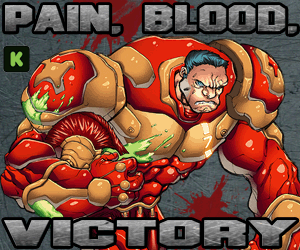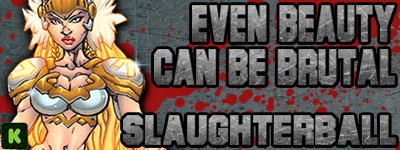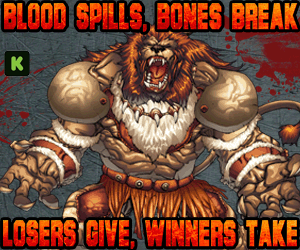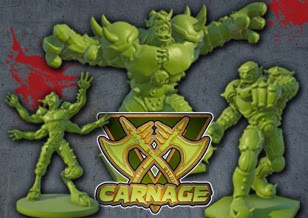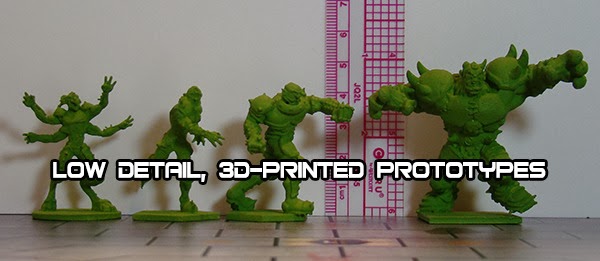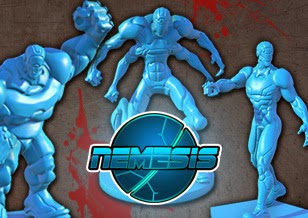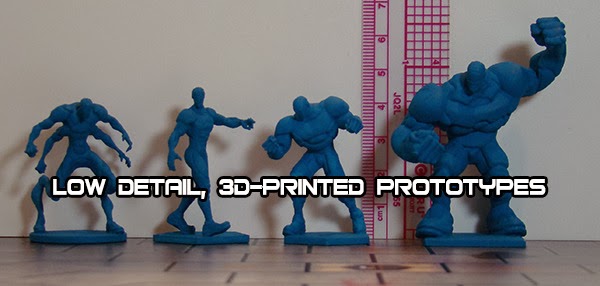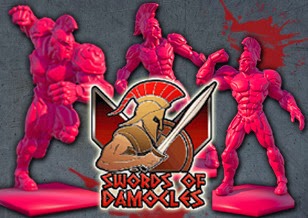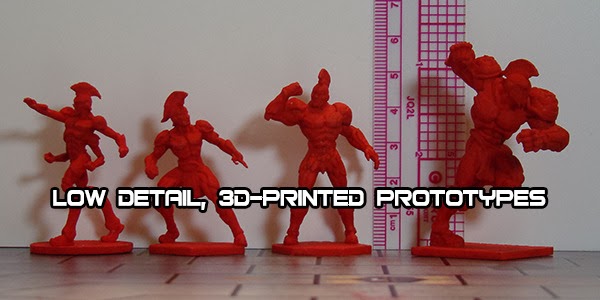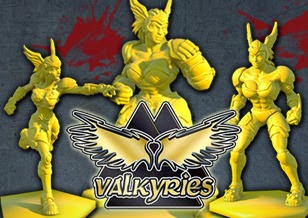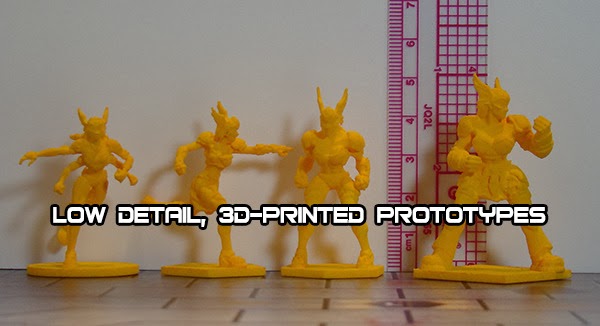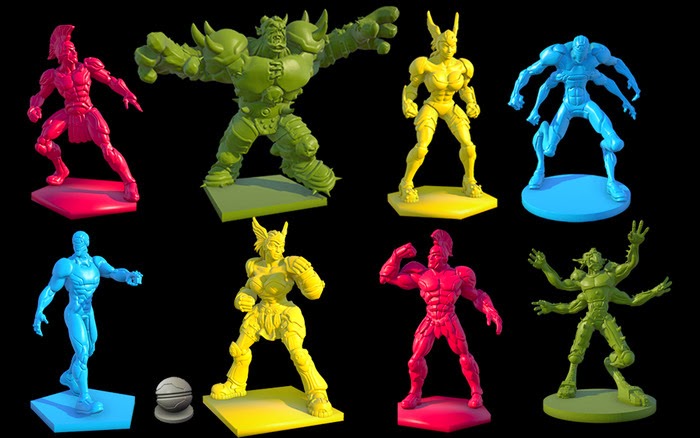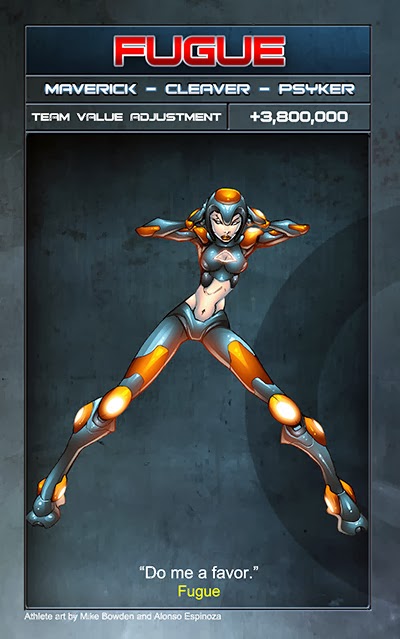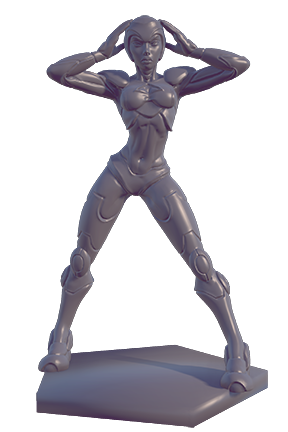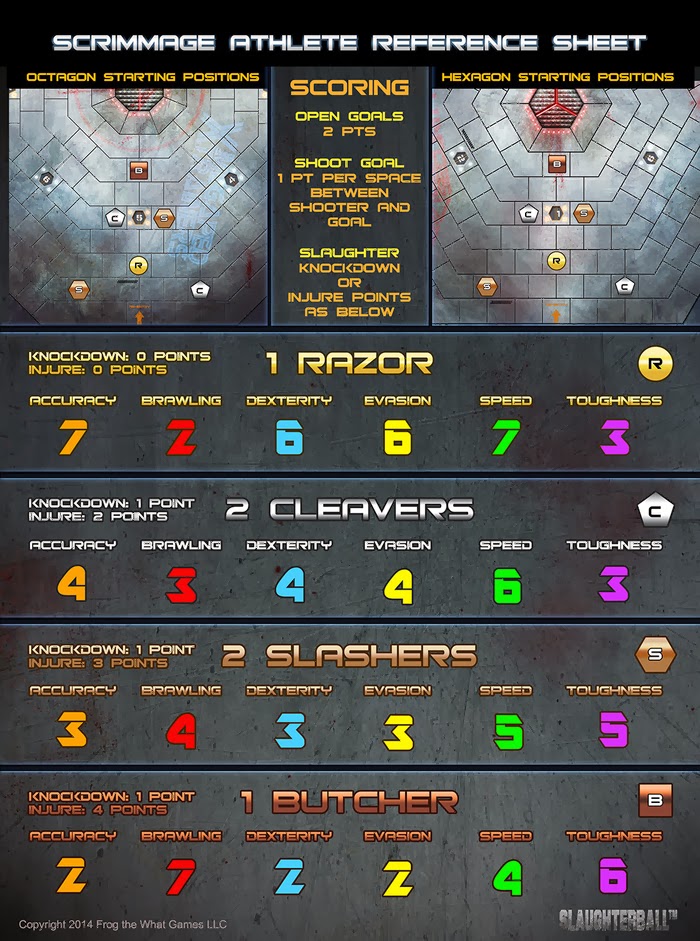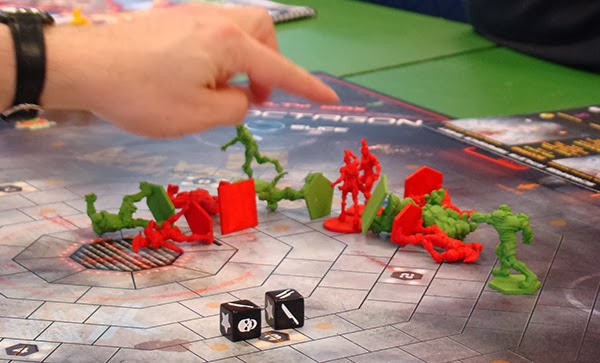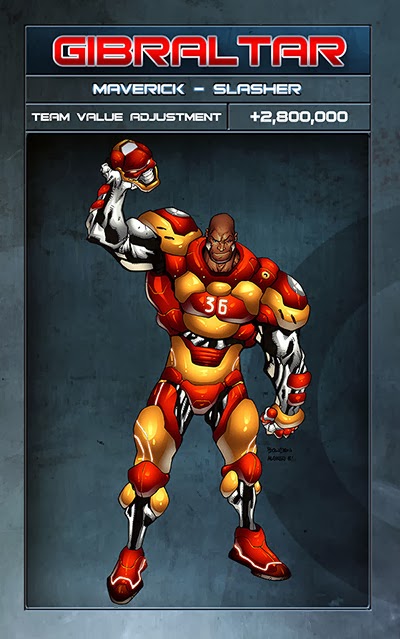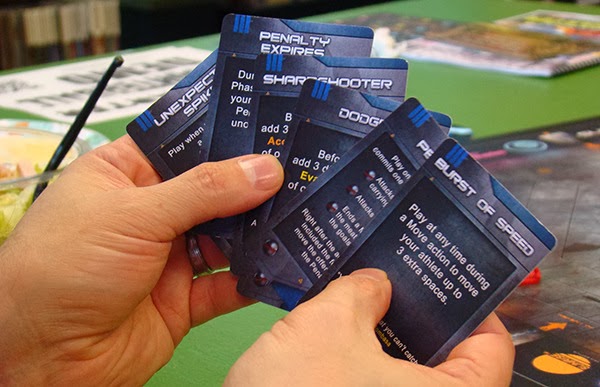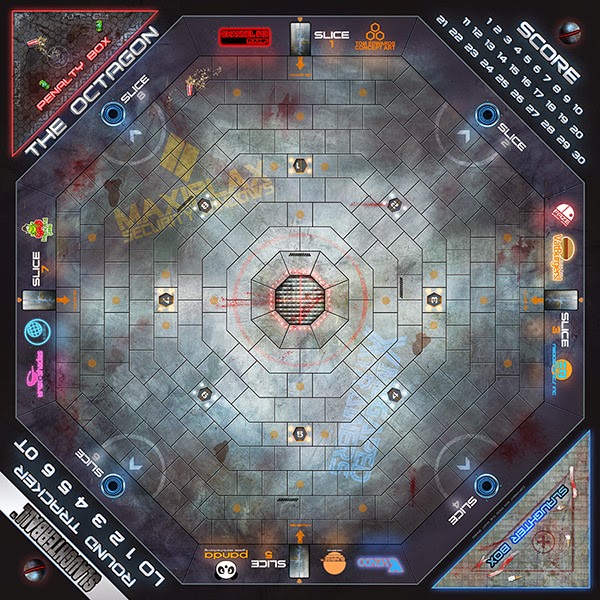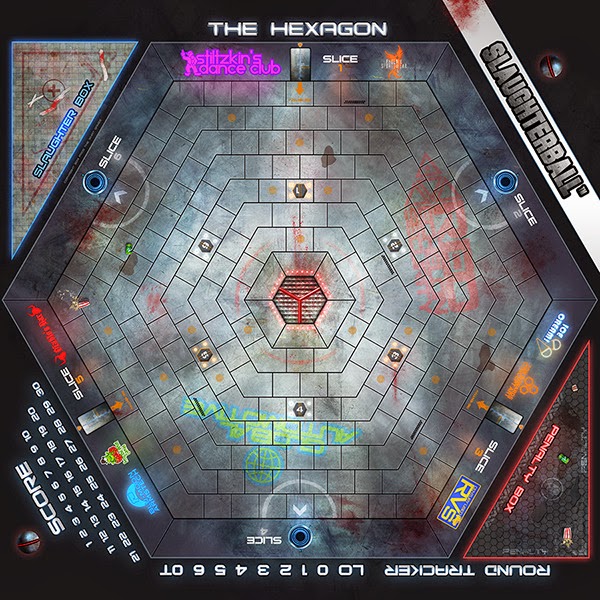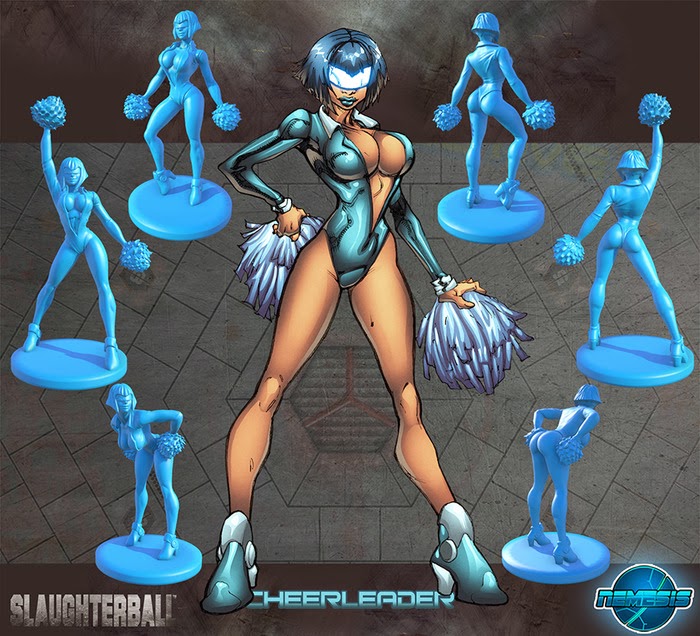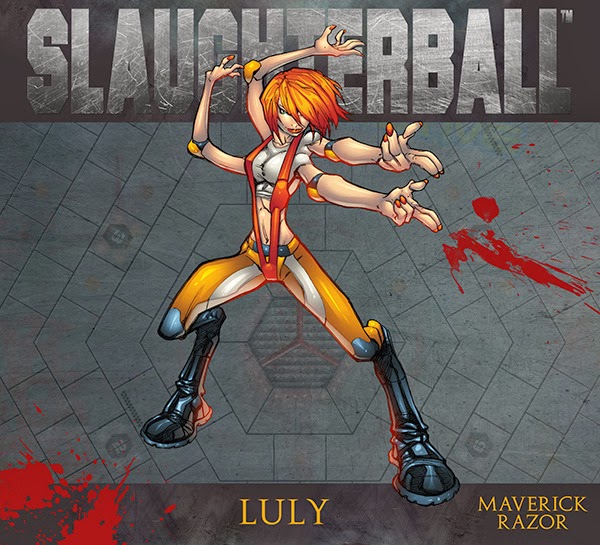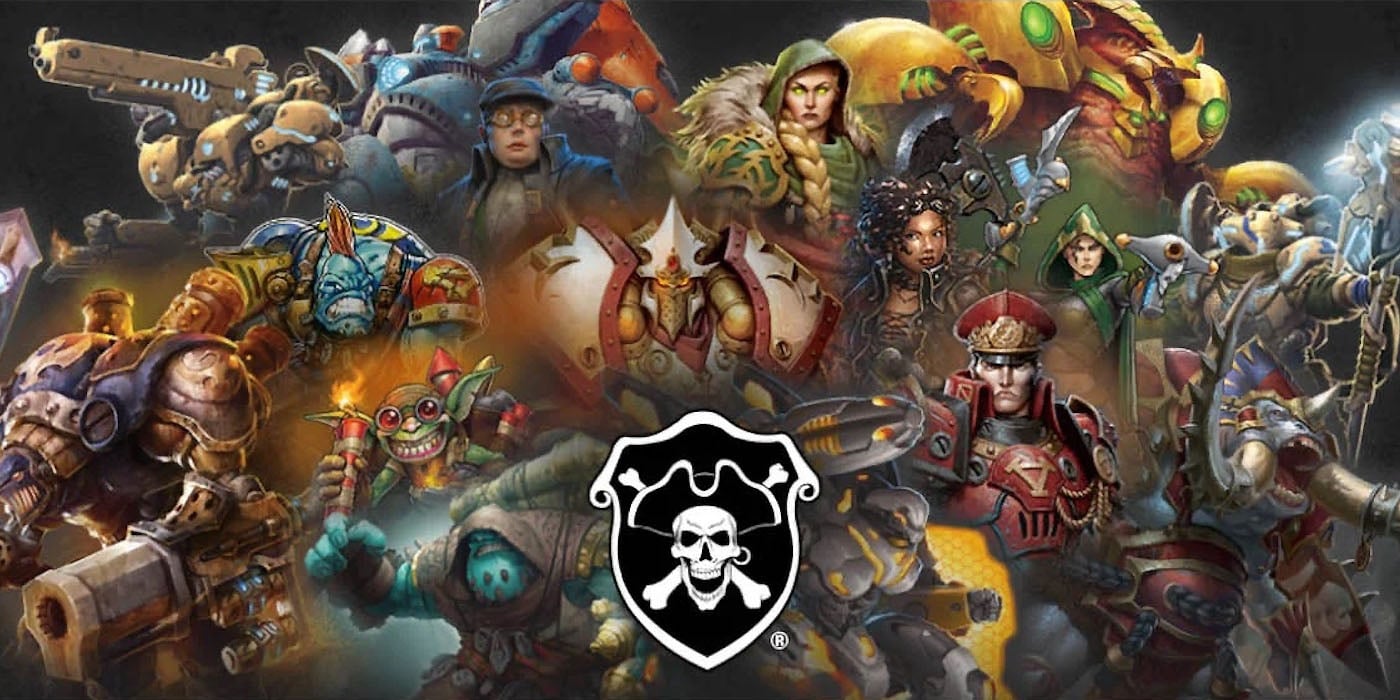Interview: Slaughterball
12 Minute Read
Mar 2 2014

Advertisement
Hello, welcome to the second part of our unofficial series of “No pads, no helmets… Just balls” interviews. This time Erik from Frog the What Games offered to answer some questions about his Slaughterball Kickstarter. Enjoy!
Me: Who are you and what is your position at Frog the What Games?
Erik: My name is Erik Kjerland and I’m the designer of Slaughterball and the co-owner of Frog the What Games.
Me: When and how did you start gaming?
Erik: I’ve been playing RPGs and board games since I was a kid, moving from Monopoly, Scrabble, and Boggle, through Talisman, Axis and Allies, Risk 2210, and now I’m enjoying Lords of Waterdeep, Roll Through the Ages, Descent, Nexus Ops, Memoir 44, Small World, and more.
Me: When did you start working on Slaughterball?
Erik: I started designing Slaughterball in 2008. Of course, back then it was just part of a pastime of mine to design games (I have three others at the playtest stage). I never expected anything to come out of it, due to the vast expense of board game production. At most I thought I’d play it with friends.
But after board games started taking off on Kickstarter I realized that my dream of producing a board game could be realized. So, in late 2011 I started working on it more aggressively. I have a full time job, so it’s taken me 2 ½ years to get it ready for Kickstarter.
Me: Is that your first job in the hobby industry?
Erik: Yes, in board games. But, I’ve written a the Arsenal and Factory books for d20, contributed a monster to Deadlands, wrote an adventure in Dungeon magazine, and I have several books available on Amazon under my pen name Derek J. Canyon.
Me: How many people are working on Slaughterball?
Erik: In addition to me, the designer, I have commissioned six great artists to do the 2d and 3d visualizations that bring the 22nd-century brutal glitz to life. My wife Shari is doing the editing and helping with the business side. Plus some friends who are helping with the playtesting.
Me: Give us a three-word description of Slaughterball.
Erik: Quick, brutal, badass.
Me: Slaughterball takes place in the same futuristic universe you created for your novel “Dead Dwarves Don’t Dance”. Can you give us an introduction to the background story?
Erik: It’s the 22nd-century. The old nations are gone, consumed by the United Globe government. Citizens are confined to vast metroplexes while the rest of Earth is restored to wilderness. A new servant caste of genetically engineered neohumans are grown in vats, each type designed to serve humanity – flawless pleasers for gratification and ecstasy, hulking goons for war and violence, and perfect athletes to entertain in brutal bloodsports. Of these, Slaughterball is the most popular. It entertains citizens of every stripe, from the jaded elites in their peerless towers down to the criminal subclass lurking in the squalid underbelly of the metroplexes.
Me: The game comes with 4 teams, do they have different play-styles, and if yes, can you give short description?
Erik: The four pro teams that come with the game are used in the exhibition and league rules:
Carnage – Genetically engineered to resemble goblins, orcs, and ogres of legend and literature, this team excels at slaughtering opponents. They don’t handle the ball as well as other teams, so they concentrate on attacking and eliminating other athletes.
Nemesis – Sleek and clever, Nemesis prides itself on a deep playbook and potent counter-strategies. Their skills give their coach more strategy cards, and the ability to thwart opposing cards. Nemesis coaches will have a wider range of options each turn.
Swords of Damocles – While they might be perfected pretty boys, these Greek athletes are masters at scoring goals, thanks to their skilled razors. If you like shooting goals, the Swords are your chrome.
Valkyries – These lovely ladies easily manipulate and lure opponents into dangerous situations. If you like having more control of your opponent, these Viking vixens will get it done.
Me: What kinds of athletes are in each team?
Erik: Each team has four different types of athlete: Razor, Cleaver, Slasher, and Butcher.
The Razor is the four-armed speed-demon, fast, agile, accurate, but fragile. Don’t put these guys in harm’s way.
A Cleaver is a bit tougher and a bit slower than the Razors, but they frequently give their coaches more strategic options during the game. They are the schemers and thinkers, and are also good at supporting the razors.
Slashers are the hunter-killers. They love to pound opponents into mincemeat, and often enjoy skills that make this much easier.
And the Butchers are the behemoths in the pit, mountains of pain, toughness, and brutality. They exist for one purpose: slaughter!
Me: Are the athletes the same for each team, i.e. is a Carnage Slasher the same as a Valkyrie Slasher?
Erik: Athletes vary by team, in trait values, skills, and appearance. The Carnage Slasher is stronger, meaner, and can really dish it out. The Valkyries Slasher is a dish, and she’s quite distracting. But give her the heavy steel slaughterball and she can really cause some damage, thanks to her Ballbuster skill.
Me: How do players pick their teams?
Erik: In the basic scrimmage game rules, teams are identical and pre-chosen to help new players get up to speed quickly. In exhibition games, each pro team has a different roster, but you can also use optional rules to pick your own athletes. In league games, coaches get eight athletes of their choice, six of which participate in each game.
Me: Tell us something about the Mavericks.
Erik: Mavericks are free agent athletes who can be hired by coaches to replace team members in a game. Mavericks are quite popular with the fans, because they frequently break rules just by entering the pit. For example, even though psykers are not permitted on official team rosters, you can hire them as mavericks. This allows a mentalist like Fugue to hire herself out to a coach and use her powers to befuddle and control opponents.
Me: What traits does Slaughterball use?
Erik: Slaughterball uses six traits:
Accuracy for how good the athlete is at throwing the ball.
Brawling for attacking opponents.
Dexterity for handling the ball.
Evasion is needed to avoid attacks.
Speed determines the number of spaces the player can move on your turn.
Toughness tells you how difficulty it is to injure a player.
Me: Please describe a typical turn in Slaughterball.
Erik: Slaughterball is designed to be quick with lots of movement, chopping, and scoring. On your turn you get to act twice with three of your six athletes. You can take actions such as Move, Chop, Shoot, Pass, and Spike. Skills will give you even more options.
Your athletes will quickly spread across the pit, scoring multiple goals per turn, and inflicting brutal casualties. It’s not uncommon for 6-8 athletes to wind up in the Slaughter Box in a 4-team game. Even so, in hundreds of playtests, I’ve only seen one TTK, Total Team Kill. So, there’s an achievement for coaches out there: TTK!
The score will fluctuate considerably, as teams continually take over first place, especially if they make risky 5– or 6-point shots. Often, the winning points are scored in the last turn, so you can never be too comfortable with your lead.
Me: How does scoring work?
Erik: Blood and steel! Blood and steel!
There are three ways to score in Slaughterball:
First, Slaughter. Brutality reigns in the pit, because you score points for knocking down and injuring opponents. Nearly every athlete in the pit is a moving pile of points, and there isn’t a team in the league that doesn’t take advantage of that. Injure an opponent not only takes them out of the game, it also scores you points!
Second, Open the goals. At the start of the game all of the goals are locked shut. The first athlete to run the ball over the dangerous meat grinder in the center of the pit scores two points and opens the goals for the rest of the game.
Third, of course, Goals. Throw the steel ball into any of the goals. You score points equal to the distance between you and the goal. Of course, longer shots are harder to make, so there’s a risk-reward here that you have to manage. Do you go for the easy 2-point shot, or do you try to take the lead with a difficult 5- or 6-point shot.
Me: How long does it take to play a match?
Erik: In 2–player demos, I’ve taught brand new coaches the rules and finished the match in 30 minutes. Experienced players can finish a 2-player match in 20 minutes. Four-player matches can take 60-90 minutes depending on the rule set used.
Me: Slaughterball comes with custom dice; please tell us something about the underlying game mechanic.
Erik: Slaughterball’s dice enable an elegant and intuitive action–success mechanism. If you can count knives, you’ll have no problem.
Slaughterball uses dice pools to determine success. Roll a number of dice equal to the relevant trait (Accuracy for throwing, Brawling for fighting, etc.). The number of knives you roll determines your success level.
For example, when you chop an opponent, both athletes roll Brawling dice. Whoever gets more knives, knocks down the opponent. If both roll the same number of knives, both are knocked down. If one rolls more extra knives than the opponent’s Toughness, that opponent is injured and sent to the Slaughter Box.
That’s pretty much it. No tables to refer to, no converting numbers into other numbers. Just count knives.
The other symbols on the dice are used for skills. For example, the Star Shooter skill lets an athlete count star symbols as additional knifes.
Me: My favorite action is definitely Spike, can you talk us through an example of how this action works?
Erik: Spike is the most complicated basic action, and so it should be attempted only after you’ve got the rest of the basic actions figured out.
Spiking is when an athlete throws the ball at an opponent in an attempt to knock down or injure him. Spiking is very difficult to pull off, because athletes are great at dodging the ball and have some very good armor to protect them. Usually, the best you can hope for is to knock down an opponent. But that will score you 1 point plus 1 point per space between the spiker and the target.
Spike process:
The spiker rolls dice equal to his Accuracy plus Brawling plus bonus dice based on the size of the target. Then the target rolls his Evasion dice. The target is knocked down if the spiker rolls more knives than the target’s knives plus the throw distance plus the target’s Toughness. Finally, the ball scatters from the target’s space no matter what.
Me: Tell us something about the Strategy cards.
Erik: Cards can help your athletes perform amazing feats, or thwart an opponent‘s best laid plans!
There are 70 strategy cards in the deck. Each coach gets a number of cards, which he can discard completely and redraw at the start of his turn. While not all cards are created equal, they all have some benefit that is useful at some point during a match. There are many cards that add dice to your rolls like Brute, Sharpshooter, Snagger or Dodger, let you move faster with a Burst of Speed, Interrupt opponents on their own turn and hit them with a Clothesline, catch others in fouls and cause a Penalty or Shot Clock, or get your penalized or injured athletes back in the game because they have No Time to Bleed or their Penalty Expires, plus many more.
One important aspect is your card management. There are proactive and reactive cards. If you want to react to stuff your opponents do, you’ll keep cards like Penalty, Axed, Clothesline, and Interrupt in your hand. But if you do, you won’t have as many proactive cards to help with your own strategies, such as Brute, Burst of Speed, Brutal Spike, and so on.
Me: Why did you decide to give the power to punish an opponent for a foul to the players instead of having some referee-rule?
Erik: Ease and speed of play.
During initial design, I experimented with a random referee on the field. Then with an omnipotent referee who always caught offenders. The first slowed down the game, while the second wasn’t any fun at all because you always knew you were going to get caught – hence, fouling was rare.
Then I hit on abstracting the refs into the strategy deck and it all fell neatly into place.
Now, you never know if someone has a Penalty card, and so you have to take a chance when you kick that prone cleaver.
On the other hand, keeping a reactive card like Penaltyin your hand might prevent you from getting a helpful proactive card like Burst of Speed or Brute. This card-management decision made fouling another strategic option for coaches, and one that can really be fun in a league season. For example, in the first few games you can commit lots of fouls, making other coaches save Penalty cards in the next game. But in the next game you don’t foul at all, and the other coaches have useless Penalty cards in their hands.
Plus, making punishment for penalties inconsistent falls right in line with the concept of distracted, inattentive, or corrupt refs who don’t always catch everything.
Me: How did you get the idea of adding a special 3-player field?
Erik: I designed Slaughterball from day one as a multi-team game, where up to four teams can battle it out in the pit. I settled on an Octagon pretty early, and spent a lot of time trying to equally arrange three teams in a pit with an even number of sides. I just couldn’t get it balanced, as one team was always sandwiched between two others. So, I figured “There are two sides to this board! Why leave one side blank? I’ll just create a 3-team pit on the reverse.“ And that’s how the Hexagon was born.
Me: You have teasers for 4 more teams and 20 Mavericks on the Kickstarter page, are those all fully developed and ready to go characters?
Erik: All four extra teams and most of the mavericks are playtested and ready to use, but I don’t have the 3d sculpts made yet. Kickstarter stretch goals will help pay for that work.
Me: What role will Cheerleaders and Mascots play in Slaughterball?
Erik: I have a great backer community, and they’ve made some interesting suggestions for how cheerleaders and mascots will work. My initial plan was to have each cheerleader provide one reroll per game, and each mascot provides one Cancel card per game. But now I’m interested in working through some of the backer’s ideas and maybe adopting them. We’ll see where those end up.
I’m also working on a Pre-Game Cheerleader Showdown mini-game, which will give you more options with the cheerleaders.
Me: That sounds like fun!
Please tell us something about player development during a league.
Erik: After each league game, coaches will earn money. You can spend that money on new support staff and new skills, or trait increases for athletes. There are 50 skills to choose from, such as Immaculate Reception, Star Brawler, Savagery, Handoff, and so on. I use skills to slowly add complexity to the game. For example, interceptions are not in the basic rules because they’re a bit more complicated. But if you buy the Intercept skill for your athlete, you can use it. Coaches who don’t have that skill don’t have to worry about it until someone uses it against them.
Me: Are there plans for additional game modes? Maybe an expansion with a 5 and 6 player pitch?
Erik: Wow, I hadn’t thought of that. There’s so much carnage and action in a 4-team game already! I don’t know if the world can handle even more brutality. But, if the fans want it, it could show up in an expansion…
Thanks a bunch for the opportunity to tell people about Slaughterball. Now, let’s get crunchy!
Me: Oh no, I have to thank you for taking the time to answer my questions!
If you would like to know more about the game or support it, head over to the Kickstarter campaign or the official Slaughterball homepage.
Slaughterball sounds like my kind of game – easy to learn with lots of violence and “take that!” moments. And the option for 3 and 4 player games is the cherry on top of it.
Author: Tabletop Fix
Advertisement

